A communication management plan is a document that outlines how the information will be exchanged between parties. It includes who will be responsible for communicating, what type of information will be shared, and when communication should take place.
A plan is essential so everyone is on the same page and knows what to expect. A well-crafted plan will help to ensure that your project runs smoothly and efficiently as possible because it will help to avoid misunderstandings and miscommunication.
- What Is Included In The Project Communication Plan?
- How To Create Communication Plan
- Benefits Of An Effective Communication Plan
- The One Page Communication Strategy Template
- The Strategic Communication Strategy Template
- The Tactical Communication Strategy Template
- The Crisis Communication Strategy Template
- The Change Communication Strategy Template
- Impacts of Not Having a Strategic Communication Plan
Creating a communication strategy can seem daunting, but it doesn’t have to be. Using a template, you can ensure that you cover all critical elements.
Communication plan templates are guides that help you create a strategy for communicating with your audience. It includes templates for various communication tools, such as email, social media, and print materials, and provides tips on how to use each tool effectively.
Creating a communication strategy can be helpful in several situations, such as launching a new product or service, planning an event, or dealing with a crisis. It can also be a valuable tool for everyday communications, such as keeping your team on the same page or ensuring your customers are always up to date on your latest offerings.
It also helps simplify the planning process as it provides a structure for identifying stakeholders, setting objectives, and outlining the methods and channels that will be used to communicate.
It’s important to note that a communication strategy is not a one-time document. It should be reviewed and updated on an ongoing basis as the needs of the project change.

What Is Included In The Project Communication Plan?
- The communication objectives: What are you trying to achieve with the strategy? What are your goals?
- The target audience: Who are you communicating with? Who needs to be kept in the loop?
- The channels of communication: How will you communicate with the target audience? What communication methods will you use?
- The message: What is the main message you want to communicate? What key points do you want to make sure are communicated?
- The frequency of communication: How often will you communicate with the target audience?
- The communication schedule and tools: When will you communicate with the target audience? What tools will you use?
- The communication budget: How much money will you spend on the strategy?
How To Create Communication Plan
Perform a situation analysis
This will help you to understand the current situation, identify any communication purposes, and determine who your target audience is.
Consider both the internal and external factors that may be affecting your organization. Some internal factors could include organizational changes, while external factors could include a change in the economic climate.
Identify and define objectives
Your objectives should be SMART:
Specific: Be clear and concise about what you want to achieve.
Measurable: Include milestones and target dates so that you can track progress.
Achievable: Set realistic goals that can be achieved within a timeframe.
Relevant: Ensure that your objectives are suitable to your organization’s mission and vision.
Time-bound: Set a timeframe for each objective so that you can stay on track.
Your objectives should also be aligned with your organization’s strategic plan.
Understand and profile your key audience
You need to know who you’re trying to reach and what type of relationship they have with your organization. Are they customers? Employees? Stakeholders? The general public?
Creating audience profiles can help you segment your target audience and develop messaging that resonates with each group.
When creating your audience profiles, consider the following:
• Who are they? (Demographics)
• What do they care about? (Motivations)
• What do they need to know? (Information needs)
• How should we communicate with them? (Channels)
Decide the media channels and create a strategy
There are many ways to communicate your messages, but not all channels are created equal. The best way to reach your audience will vary depending on who they are and what type of relationship they have with your organization.
Some common communication channels include:
• Website
• Social media
• Email
• Print materials
• Events
Create a timetable for publishing
This ensures your plan stays on track and that audiences receive timely, relevant information.
Your timeline should consider:
• How often do you need to communicate?
• What’s the best time to reach your audience?
• Do you have any key dates or deadlines that need to be considered?
Be sure to build in some flexibility to account for the unexpected. Things happen, and your plan should be able to adapt as needed.
Monitor and evaluate the results
Your plan is not a set-it-and-forget-it type of document. It would be best if you revisited it regularly to ensure it’s still relevant and effective.
Monitoring the results can help you make necessary adjustments to ensure that you’re achieving your goals. Evaluating them can help you demonstrate the value of your work to decision-makers and secure the resources you need to succeed.
Benefits Of An Effective Communication Plan
- Saves time: A lot of time is wasted brainstorming and trying to remember the essential points that must be communicated. Having a template handy will help you save this valuable time.
- Ensures accuracy: When you have all the key points in front of you, it becomes easier to communicate them accurately to the concerned parties. This reduces the scope for miscommunication.
- Helps you stay organized: Without a template, it is easy to lose track of important details and points that need to be communicated. This can lead to haphazard and unorganized communication. A template will help you keep your thoughts and message clear and concise.
- Makes the process easier: A plan will give you a clear idea of what needs to be done and how it needs to be done.
- Saves money: You will not have to hire a professional to create the plan. Additionally, you can use the same template for future projects and will not have to spend money on creating new ones each time.
- Ensures transparency: Communication plan templates will help ensure that all the stakeholders are on the same page. This is because it will lay down all the points that need to be communicated to them. As such, there will be no scope for misunderstanding or misinterpretation of the message.
The One Page Communication Strategy Template
This is perfect for those who want to create a simple, straightforward plan. It’s a great option if you’re short on time or are new to creating communication strategies.
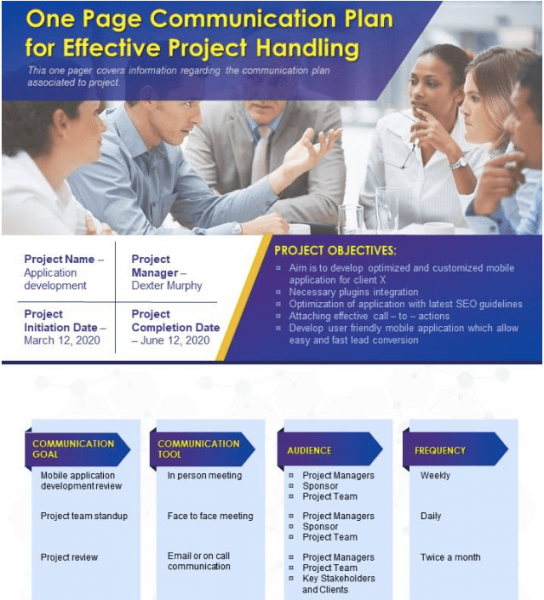
The Strategic Communication Strategy Template
This is ideal for organizations that want to create a more comprehensive plan. It is excellent for organizations that want to track their progress over time.
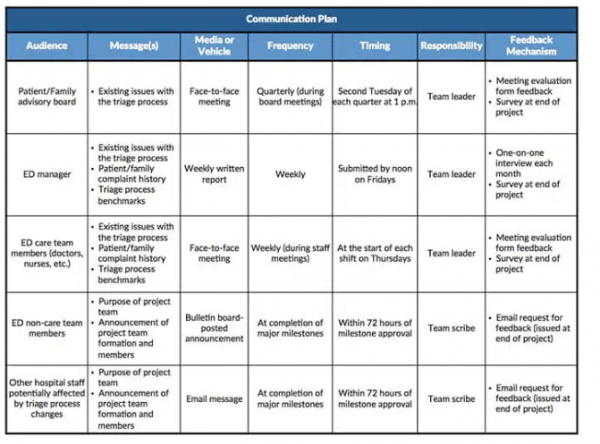
The Tactical Communication Strategy Template
his is perfect for those who want to focus on the tactics of their communication strategy. It is easily adaptable to different projects and can be used repeatedly.
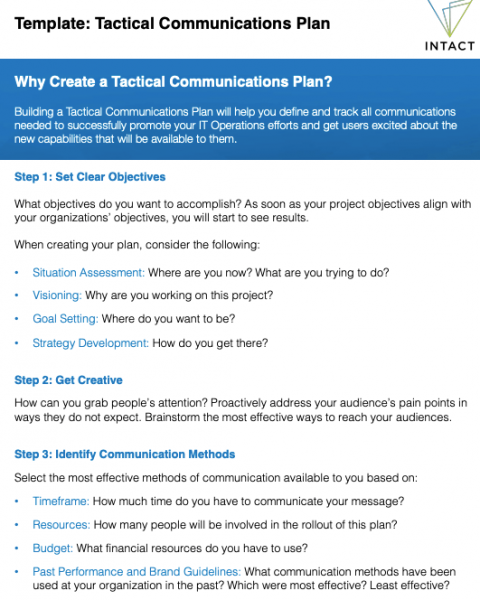
The Crisis Communication Strategy Template
This is essential for organizations that want to be prepared for a crisis. It is crucial to have it in place to quickly and effectively communicate with your stakeholders in an emergency.
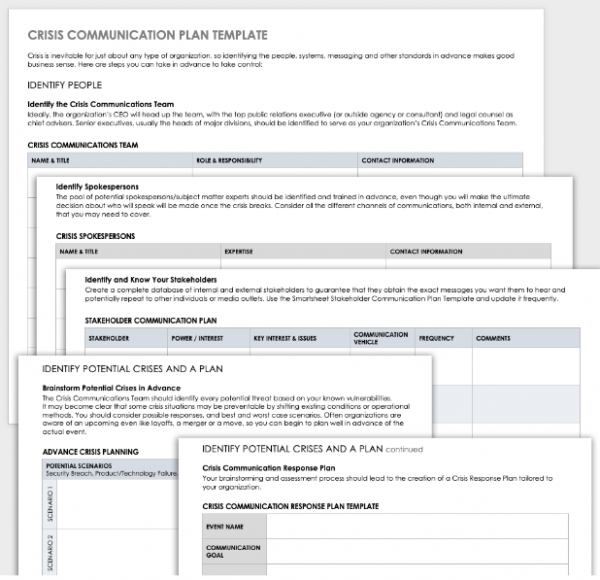
The Change Communication Strategy Template
This is perfect for organizations that are undergoing changes.
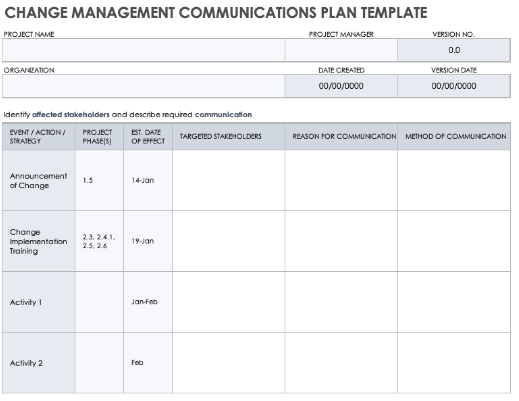
No matter which template you choose, ensure that it includes all the essential elements of a communication strategy. By doing so, you can be confident that your strategy will be effective and successful.
Impacts of Not Having a Strategic Communication Plan
- Setting unrealistic goals: Not having measurable goals is a recipe for disaster. Without tracking and measuring progress, it will be challenging to determine whether or not the communication strategy is working.
- Failing to engage stakeholders: Without a communication strategy, it won’t be easy to engage all stakeholders in the project. This can lead to a lack of buy-in from important decision-makers, jeopardizing the project’s success.
- Missing critical deadlines: A communication strategy can help ensure that all stakeholders are kept up-to-date on the project timeline and those critical deadlines are not missed.
- Lack of consistent messaging: Without a plan, ensuring that all stakeholders receive the same information about the project can be challenging. This can lead to confusion and frustration among team members and stakeholders.
FAQs
What are the components of a communication plan?
The goals or objectives of the communication
• The target audience
• The key messages
• The channels or media to be used
• The timing of the communication
• The budget
• The responsible parties
What are the benefits of a communication plan?
A communication strategy can ensure that everyone involved in a project is on the same page, help to avoid misunderstandings and miscommunication, help to keep a project on track by ensuring that all stakeholders are kept up to date on progress and any changes, and can help avoid surprises.
Who creates the communication Plan?
It is typically created by the project manager or a designated team member. However, it should be reviewed and approved by all stakeholders before being put into action.
